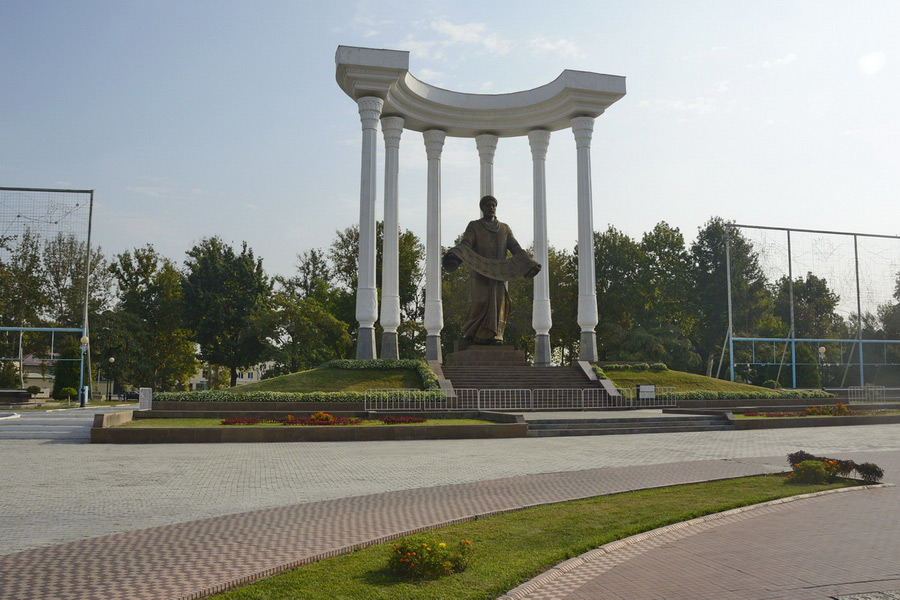Fergana Travel Guide

Founded: 1876
Former names: New Margilan, Skobelev
Regions: Fergana valley
Altitude: 580 m
Population: Population: 380,800 (2018) - ru.wikipedia.org.
Official language: Uzbek
Living nationalities: Uzbek, Russian etc.
Time zone: UTC+5
Phone code: +998 73
Zip code: 1501XX
Automobile codes: 40-49
Fergana sits at the heart of the scenic Fergana Valley, which is also home to the cities of Andijan, Namangan, Kokand, Margilan, and Rishtan.
Although the city itself was founded nearly 150 years ago, the region boasts a deep and rich history. Legend has it that the inception of the Great Silk Road was inspired by the Chinese emperor's fascination with the heavenly horses of Fergana—renowned for their speed and strength—leading him to desire these horses for himself.
Fergana may not have many historical landmarks, but each one certainly deserves a visit.
How to Get to Fergana?
Fergana is accessible via airplane, train, and car.
The airport in Fergana welcomes regular flights from cities like Tashkent, Moscow, Saint Petersburg, Irkutsk, Surgut, Kazan, Novosibirsk, Baku, Dubai, and Istanbul.
While Fergana itself lacks a train station, you can take a train to nearby Margilan and then drive approximately 10-12 kilometers to reach the center of Fergana. Trains from Tashkent, Termez, Khiva, Bukhara, Navoi, and Samarkand arrive in Margilan.
Driving from Tashkent to Fergana takes about six hours. Alternatively, a journey from the Kyrgyz city of Osh, including crossing the border, takes about 3.5 hours.
Is Fergana Safe?
Fergana is quite a safe city where you can comfortably stroll through the streets even in the evenings. Nonetheless, it's wise to follow basic safety precautions and keep an eye on your belongings and documents.
Brief History of Fergana
People have been living in the Fergana Valley since the Stone Age. Archaeologists have uncovered settlements from that time and artifacts indicating the presence of the Andronovo culture from the third to the second millennia BC. Numerous artifacts from the fifth century have also been found.
Historians note that the Fergana Valley was first mentioned around the second century BC, initially called "davan" and later "bohan". The name "Fergana" appeared in early medieval times as "Pargana," meaning "a valley enclosed by mountains".
The city of Fergana was established in 1876 by Russian settlers led by General Mikhail Skobelev. It was originally called New Margilan, in homage to Margilan located just 12 kilometers away, and served as a military-administrative center to oversee the former Kokand Khanate. A fortress was built shortly after the city's founding, though it no longer exists.
In 1907, New Margilan was renamed Skobelev, in honor of the 25th anniversary of the general's death. By 1924, the city was renamed Fergana, straightforwardly because it is situated in the Fergana Valley.
During the Soviet era, Fergana evolved into a significant industrial hub.
Fergana Sights & Attractions
The former governor's house, which still stands today, was built in the 1890s. The building features Eastern elements such as arched windows. Today, the two-story building houses the Fergana Regional Russian Drama Theater.
Fergana also hosts a regional theater for musical drama and comedy, where performances are given in Uzbek.
The building of the former men's gymnasium, which now serves as the administration for Fergana State University, was also built before the revolution. The gymnasium, constructed according to a standard design of that era, today attracts not only tourists but also residents of Uzbekistan.
The building of the military assembly, erected in 1878, now serves as the Fergana House of Officers. The project was designed by the military engineer Alexander Sinclair, who also co-developed the master plan for the future Fergana.
History enthusiasts will find it interesting to visit the State Museum of History and Culture of the Fergana Region (the regional museum of local lore). It houses over 80,000 exhibits, including ancient ones. The museum's history began in 1895 when the military governor allocated four rooms of his house for exhibits from an agricultural exhibition held in 1894.
Just over 30 km west of Fergana lies a small town called Chimion. It is home to a sanatorium of the same name, famous throughout Uzbekistan as a balneological resort. Sulfur baths here help treat ailments related to gynecology, urology, the nervous system, and respiratory organs.
Located 50 kilometers from Fergana is the Uzbek enclave of Shahimardan. This is a piece of Uzbekistan entirely surrounded by Kyrgyzstan.
Food in Fergana
Fergana pilaf is a particular pride of the region. It differs from other recipes in that it is made with a reddish rice called devzira, which is only grown in the Fergana Valley. Ingredients for the pilaf are typically fried in a large amount of oil, giving the dish a brownish color. Note that Fergana pilaf is very fatty, so it is best eaten with a tomato and onion salad called achichuk.
Fergana also produces a very tasty kurt—dried balls of sour milk. While kurt is made throughout Uzbekistan, the Fergana version has a distinctly sharp tang.
Shopping in Fergana
In Fergana itself, you can buy traditional souvenirs. However, in neighboring Margilan (a 30-minute drive), you might want to buy almost everything you see. The city is famous for its silk production. Here you can purchase both handmade finished products and fabrics.
Best Time to Visit Fergana
The best time to visit Fergana is from April to October. During the colder months, the road to Fergana, which passes through the Kamchik mountain pass, may be closed due to the risk of avalanches.

